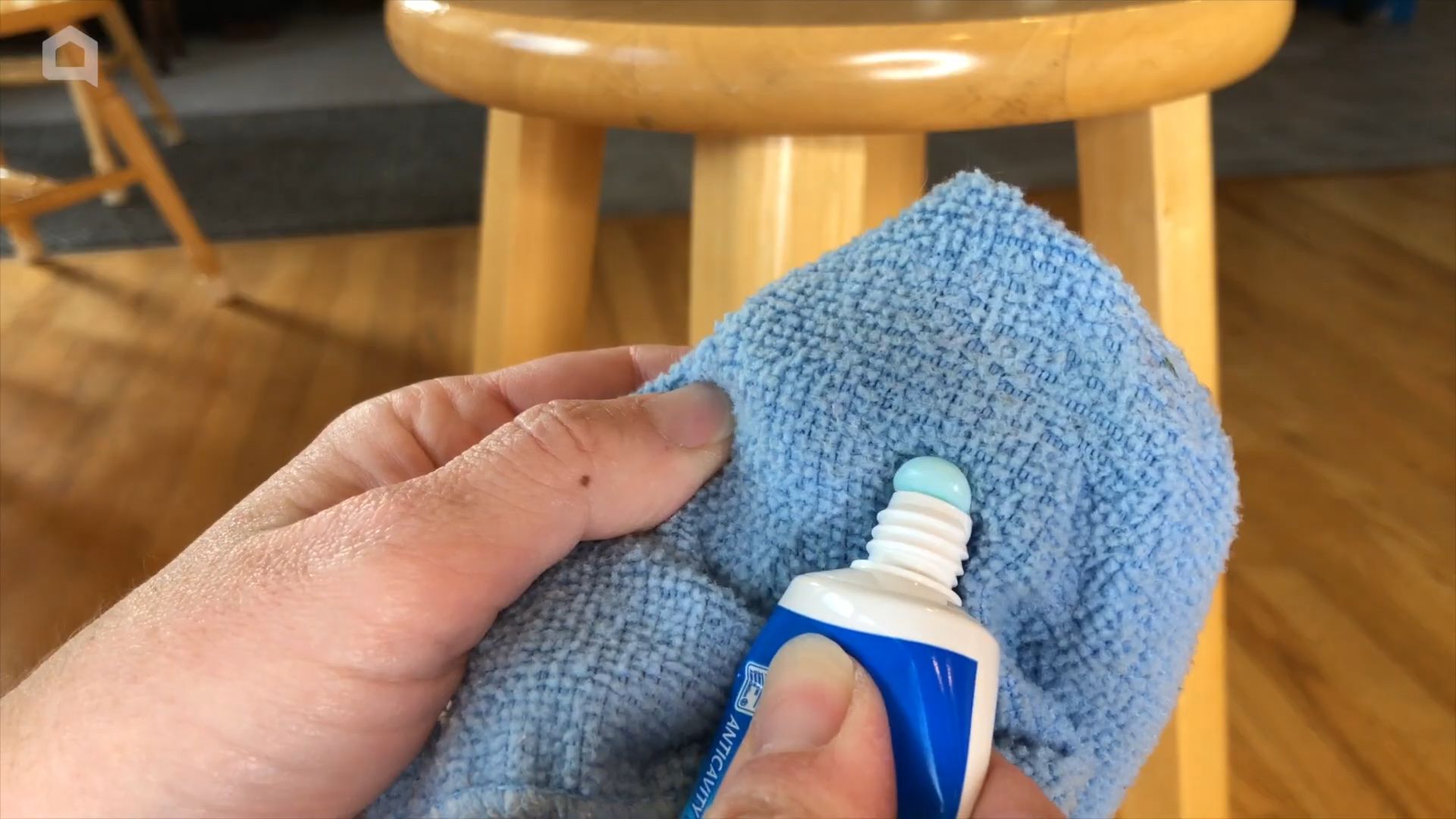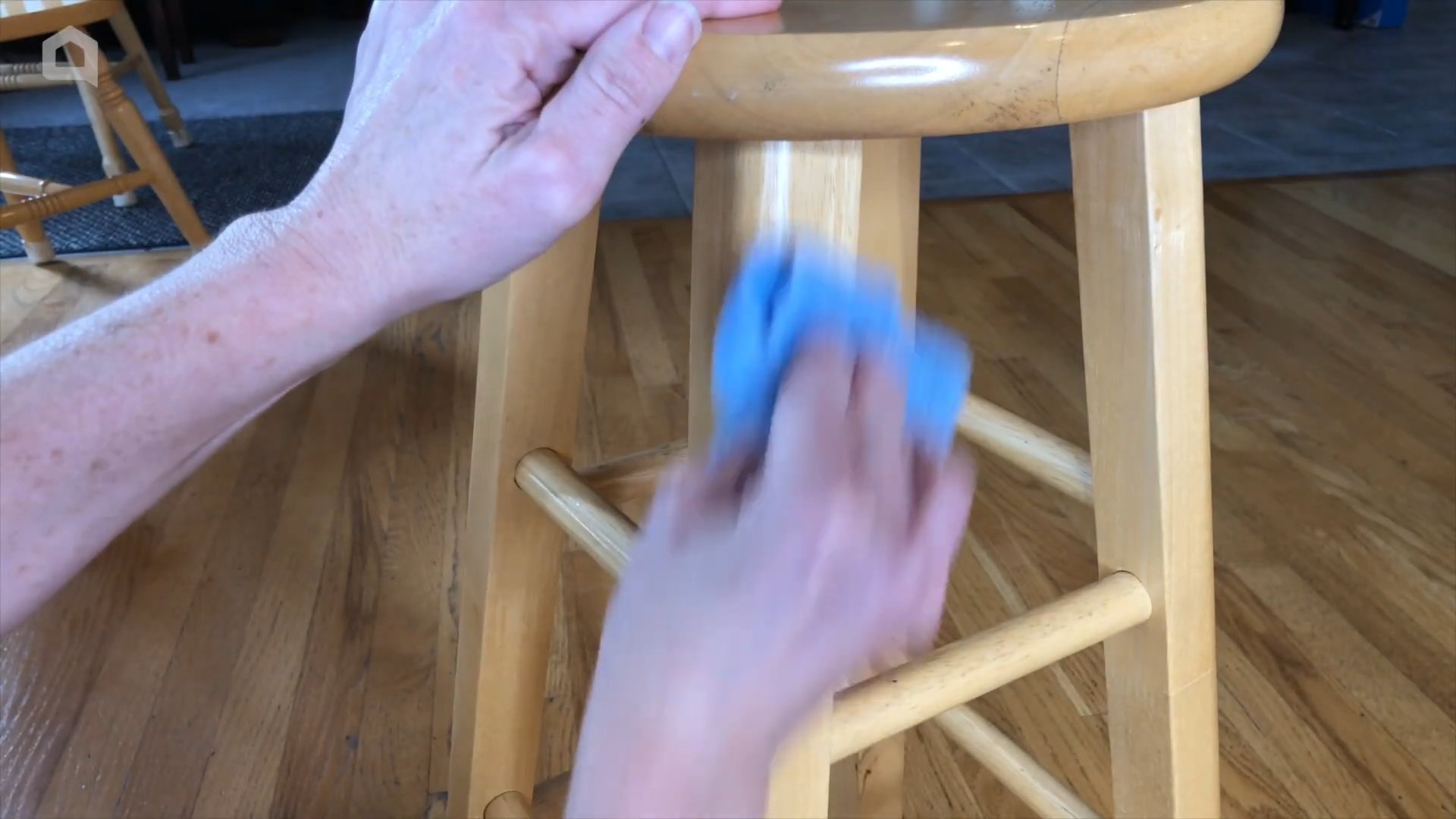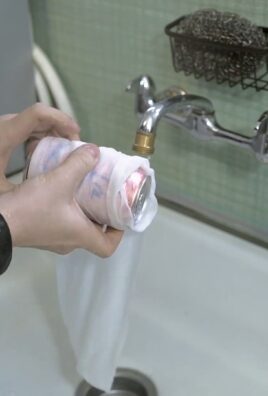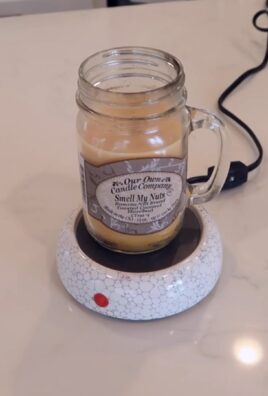Toothpaste Hacks and Uses: Beyond a sparkling smile, did you know that humble tube of toothpaste holds a surprising number of secrets for your home and beyond? I’m always amazed at how a simple everyday item can be repurposed in so many clever ways. From tackling stubborn stains to polishing silverware, toothpaste is a surprisingly versatile tool.
While we might think of toothpaste as a relatively modern invention, its roots stretch back centuries. Ancient Egyptians used a mixture of powdered ash, myrrh, and other ingredients to clean their teeth! Thankfully, our modern formulas are a bit more palatable, and far more effective, and now we’re discovering even more uses for them.
Let’s face it, life gets messy! Whether it’s a scuff mark on your favorite shoes or a lingering odor on your hands, we’re constantly battling everyday annoyances. That’s where these toothpaste hacks and uses come in. I’m going to share some of my favorite, tried-and-true methods for using toothpaste to solve common household problems. These DIY tricks are not only incredibly effective, but they’re also budget-friendly and easy to implement. So, ditch the harsh chemicals and expensive cleaners, and let’s unlock the hidden potential of your toothpaste!

DIY Toothpaste Hacks: Beyond a Sparkling Smile!
Hey everyone! I’m so excited to share some amazing toothpaste hacks that go way beyond just keeping your pearly whites shining. You probably have a tube of toothpaste sitting in your bathroom right now, and you’re about to discover its hidden potential! Get ready to be amazed by these clever uses for this everyday essential.
Cleaning Powerhouse: Toothpaste as a Cleaning Agent
Toothpaste isn’t just for teeth; it’s a surprisingly effective cleaning agent for various household items. Its mild abrasiveness and cleaning properties make it perfect for tackling stubborn stains and grime.
Polishing Silverware and Jewelry
Tarnished silverware and jewelry can look dull and lifeless. But don’t worry, toothpaste can bring back their shine!
What you’ll need:
* Toothpaste (non-gel, white toothpaste works best)
* Soft cloth
* Water
Step-by-step instructions:
1. Apply a small amount of toothpaste: Squeeze a pea-sized amount of toothpaste onto a soft cloth.
2. Gently rub the item: Gently rub the tarnished silverware or jewelry with the toothpaste-covered cloth. Use circular motions and apply light pressure.
3. Rinse thoroughly: Rinse the item thoroughly with water to remove all traces of toothpaste.
4. Dry with a clean cloth: Dry the item with a clean, soft cloth. You’ll be amazed at the difference!
Removing Water Rings from Wood Furniture
Those pesky water rings on your wooden furniture can be a real eyesore. But toothpaste can help you say goodbye to them!
What you’ll need:
* Toothpaste (non-gel, white toothpaste works best)
* Soft cloth
* Damp cloth
Step-by-step instructions:
1. Apply toothpaste to the ring: Apply a small amount of toothpaste directly onto the water ring.
2. Gently rub the area: Gently rub the toothpaste into the water ring using a soft cloth. Use circular motions and apply light pressure.
3. Wipe with a damp cloth: Wipe the area with a damp cloth to remove the toothpaste residue.
4. Dry with a clean cloth: Dry the area with a clean, soft cloth. Repeat if necessary.
Cleaning Chrome Fixtures
Chrome fixtures in your bathroom and kitchen can easily become dull and stained. Toothpaste can restore their shine and sparkle.
What you’ll need:
* Toothpaste (non-gel, white toothpaste works best)
* Soft cloth
* Water
Step-by-step instructions:
1. Apply toothpaste to the fixture: Apply a small amount of toothpaste onto a soft cloth.
2. Rub the fixture: Rub the chrome fixture with the toothpaste-covered cloth. Pay attention to areas with stains or water spots.
3. Rinse thoroughly: Rinse the fixture thoroughly with water to remove all traces of toothpaste.
4. Dry with a clean cloth: Dry the fixture with a clean, soft cloth.
Removing Crayon Marks from Walls
If you have kids, you know the struggle of crayon marks on walls. Toothpaste to the rescue!
What you’ll need:
* Toothpaste (non-gel, white toothpaste works best)
* Soft cloth
* Water
Step-by-step instructions:
1. Apply toothpaste to the crayon marks: Apply a small amount of toothpaste directly onto the crayon marks.
2. Gently rub the area: Gently rub the toothpaste into the crayon marks using a soft cloth.
3. Wipe with a damp cloth: Wipe the area with a damp cloth to remove the toothpaste residue.
4. Dry with a clean cloth: Dry the area with a clean, soft cloth.
Cleaning Your Iron
The soleplate of your iron can get dirty and stained over time, affecting its performance. Toothpaste can help clean it up!
What you’ll need:
* Toothpaste (non-gel, white toothpaste works best)
* Soft cloth
* Damp cloth
Step-by-step instructions:
1. Make sure the iron is cool and unplugged: This is crucial for safety!
2. Apply toothpaste to the soleplate: Apply a small amount of toothpaste to the cool soleplate of the iron.
3. Gently rub the area: Gently rub the toothpaste over the soleplate using a soft cloth.
4. Wipe with a damp cloth: Wipe the soleplate with a damp cloth to remove the toothpaste residue.
5. Dry with a clean cloth: Dry the soleplate with a clean, soft cloth.
Beauty and Personal Care Hacks
Believe it or not, toothpaste can also be used for various beauty and personal care purposes.
Spot Treatment for Acne
Toothpaste can be an effective spot treatment for acne due to its drying properties.
What you’ll need:
* Toothpaste (non-gel, white toothpaste works best)
* Cotton swab
Step-by-step instructions:
1. Cleanse your face: Wash your face with a gentle cleanser and pat it dry.
2. Apply toothpaste to the pimple: Using a cotton swab, apply a small amount of toothpaste directly onto the pimple.
3. Leave it on overnight: Leave the toothpaste on overnight.
4. Rinse in the morning: Rinse your face with water in the morning. Important: Don’t use this hack too often, as it can dry out your skin. Also, avoid using whitening or gel toothpastes, as they can irritate your skin.
Soothing Minor Burns
Toothpaste can provide temporary relief from minor burns by cooling the affected area.
What you’ll need:
* Toothpaste (non-gel, white toothpaste works best)
* Cool water
Step-by-step instructions:
1. Run cool water over the burn: Immediately run cool water over the burn for several minutes.
2. Apply toothpaste to the burn: Apply a thin layer of toothpaste to the burn.
3. Leave it on for a few minutes: Leave the toothpaste on for a few minutes to cool the burn.
4. Rinse with cool water: Rinse the area with cool water. Important: This is only for minor burns. Seek medical attention for severe burns.
Cleaning Your Fingernails
Toothpaste can help clean and brighten your fingernails.
What you’ll need:
* Toothpaste (any kind)
* Old toothbrush
* Water
Step-by-step instructions:
1. Apply toothpaste to your nails: Apply a small amount of toothpaste to your fingernails.
2. Scrub with a toothbrush: Gently scrub your nails with an old toothbrush.
3. Rinse thoroughly: Rinse your nails thoroughly with water.
4. Dry your hands: Dry your hands with a clean towel.
Defogging Bathroom Mirrors
Tired of foggy mirrors after a hot shower? Toothpaste can help!
What you’ll need:
* Toothpaste (any kind)
* Soft cloth
* Water
Step-by-step instructions:
1. Apply a thin layer of toothpaste: Apply a thin layer of toothpaste to the mirror.
2. Rub it in: Rub the toothpaste into the mirror with a soft cloth.
3. Rinse thoroughly: Rinse the mirror thoroughly with water.
4. Dry with a clean cloth: Dry the mirror with a clean cloth.
Other Clever Uses
Here are a few more unexpected ways to use toothpaste:
Removing Scratches from Phone Screens (Use with Caution!)
This is a controversial one, and I recommend testing it on a small, inconspicuous area first. Toothpaste *might* help reduce the appearance of minor scratches on phone screens.
What you’ll need:
* Toothpaste (non-gel, white toothpaste works best)
* Soft cloth
* Water
Step-by-step instructions:
1. Apply a tiny amount of toothpaste: Apply a *very* tiny amount of toothpaste to a soft cloth.
2. Gently rub the scratch: Gently rub the scratch in a circular motion.
3. Wipe with a damp cloth: Wipe the screen with a damp cloth to remove the toothpaste residue.
4. Dry with a clean cloth: Dry the screen with a clean cloth. Important: Be extremely careful and use minimal pressure. This method can potentially damage your screen further. I highly recommend seeking professional help for screen repairs.
Removing Stains from Clothes (Test First!)
Toothpaste can sometimes help remove certain stains from clothes, but it’s

Conclusion
So, there you have it – a treasure trove of toothpaste hacks and uses that extend far beyond just oral hygiene! We’ve explored how this everyday essential can be your secret weapon for cleaning, polishing, and even tackling some surprising household dilemmas. From restoring the shine to your silverware to banishing blemishes, the versatility of toothpaste is truly remarkable.
Why is this DIY approach a must-try? Simply put, it’s cost-effective, readily available, and often gentler than harsh chemical cleaners. You likely already have a tube of toothpaste in your bathroom, making these hacks incredibly convenient. Plus, embracing these alternative uses reduces your reliance on specialized products, saving you money and minimizing your environmental impact.
The real beauty of these toothpaste hacks lies in their adaptability. Feel free to experiment and find what works best for you. For instance, if you’re cleaning your sneakers, try using an old toothbrush for extra scrubbing power. When polishing jewelry, a soft cloth is essential to avoid scratching delicate surfaces. And for those stubborn stains on clothing, consider pre-treating the area with a dab of toothpaste before laundering.
Variations abound! For cleaning chrome fixtures, a whitening toothpaste can provide an extra boost of shine. If you’re dealing with particularly tough stains, a toothpaste with baking soda might offer enhanced cleaning action. Remember to always test a small, inconspicuous area first to ensure the toothpaste doesn’t damage the surface.
We’ve covered a wide range of applications, but the possibilities don’t end here. The world of toothpaste hacks is vast and ever-evolving. Don’t be afraid to get creative and discover new ways to harness the power of this humble product.
Now it’s your turn! We wholeheartedly encourage you to try out these toothpaste hacks and uses. Whether you’re tackling a stubborn stain, polishing your jewelry, or simply looking for a more natural cleaning solution, we’re confident you’ll be impressed with the results.
But don’t just take our word for it. Put these tips to the test and see for yourself the amazing things toothpaste can do. And most importantly, we want to hear about your experiences! Share your successes, your challenges, and any new toothpaste hacks you discover in the comments below. Let’s build a community of resourceful individuals who are maximizing the potential of this everyday essential. Your insights could help others unlock even more hidden benefits of toothpaste. So go ahead, give it a try, and let us know what you think! We are excited to hear about your journey into the world of alternative toothpaste uses.
Frequently Asked Questions (FAQs)
Is it safe to use toothpaste on all surfaces?
No, it’s not safe to use toothpaste on all surfaces. Always test a small, inconspicuous area first to ensure the toothpaste doesn’t damage or discolor the material. Avoid using toothpaste on delicate or porous surfaces, such as painted walls, certain types of plastic, or untreated wood. Abrasive toothpastes can scratch sensitive materials. For valuable or antique items, consult a professional cleaner before attempting any DIY cleaning methods. When in doubt, err on the side of caution and choose a cleaning solution specifically designed for the surface you’re working with.
What type of toothpaste is best for cleaning?
The best type of toothpaste for cleaning depends on the specific task. For general cleaning and polishing, a standard white toothpaste (not gel) is usually sufficient. Whitening toothpastes, which often contain mild abrasives, can be effective for removing stains and restoring shine to surfaces like chrome and silverware. However, avoid using whitening toothpastes on delicate materials, as they can be more abrasive. For tougher stains, a toothpaste with baking soda may provide extra cleaning power. Gel toothpastes are generally less effective for cleaning due to their smoother consistency and lack of abrasive properties. Always read the label and consider the specific ingredients before using toothpaste for cleaning purposes.
Can I use toothpaste to remove scratches from my phone screen?
While some people claim that toothpaste can remove minor scratches from phone screens, it’s generally not recommended. Toothpaste is abrasive and can potentially worsen the scratches or damage the screen’s coating. There are specialized scratch removal products designed specifically for electronic devices that are a safer and more effective option. If you’re concerned about scratches on your phone screen, consider using a screen protector to prevent future damage. For existing scratches, consult a professional repair service for the best course of action.
How do I remove toothpaste residue after cleaning?
Removing toothpaste residue is usually quite simple. After cleaning with toothpaste, thoroughly rinse the area with clean water. Use a damp cloth or sponge to wipe away any remaining residue. For hard-to-reach areas, a cotton swab can be helpful. Ensure the surface is completely dry to prevent water spots or streaks. If you’re cleaning fabric, you may need to blot the area with a clean, dry cloth to absorb any excess moisture. For stubborn residue, try using a mild soap solution followed by a clean water rinse.
Are there any surfaces I should absolutely avoid cleaning with toothpaste?
Yes, there are several surfaces you should absolutely avoid cleaning with toothpaste:
* Painted Walls: Toothpaste can damage the paint and leave unsightly marks.
* Certain Plastics: Some plastics can be scratched or discolored by toothpaste.
* Untreated Wood: Toothpaste can stain or damage the wood’s surface.
* Delicate Fabrics: Toothpaste can be difficult to remove from delicate fabrics and may cause discoloration.
* Leather: Toothpaste can dry out and damage leather.
* Electronic Screens (in general): As mentioned before, it’s best to avoid using toothpaste on electronic screens.
Always err on the side of caution and test a small, inconspicuous area before applying toothpaste to any surface.
Can toothpaste really help with acne?
Toothpaste can sometimes help dry out pimples due to ingredients like baking soda, hydrogen peroxide, and alcohol. However, it’s not a recommended treatment for acne. Toothpaste can be too harsh for the skin, causing irritation, redness, and dryness. It can also disrupt the skin’s natural pH balance and potentially worsen acne in the long run. There are many over-the-counter and prescription acne treatments that are specifically formulated for acne and are much safer and more effective than toothpaste. Consult a dermatologist for personalized advice on managing acne.
How can I prevent toothpaste from damaging surfaces?
The best way to prevent toothpaste from damaging surfaces is to always test a small, inconspicuous area first. This will allow you to assess the toothpaste’s effect on the material without risking significant damage. Use a small amount of toothpaste and gently rub it onto the surface. Observe the area for any signs of scratching, discoloration, or other damage. If you notice any adverse effects, discontinue use immediately. Choose a non-gel, non-whitening toothpaste for most cleaning tasks, as these are generally less abrasive. Always rinse the area thoroughly with clean water after cleaning with toothpaste to remove any residue.
What are some other unexpected uses for toothpaste?
Beyond the uses mentioned in the article, here are a few more unexpected uses for toothpaste:
* Removing crayon marks from walls: Gently rub toothpaste onto the crayon marks and wipe clean with a damp cloth.
* Cleaning piano keys: Use a soft cloth dampened with toothpaste to gently clean piano keys.
* Polishing tarnished brass: Apply toothpaste to tarnished brass items and rub gently with a soft cloth.
* Removing water rings from wood furniture: Apply a small amount of toothpaste to the water ring and rub gently with a soft cloth.
* Cleaning iron soleplates: Remove burnt residue from iron soleplates with toothpaste.
Remember to always test a small area first and use caution when trying these unconventional uses.



Leave a Comment